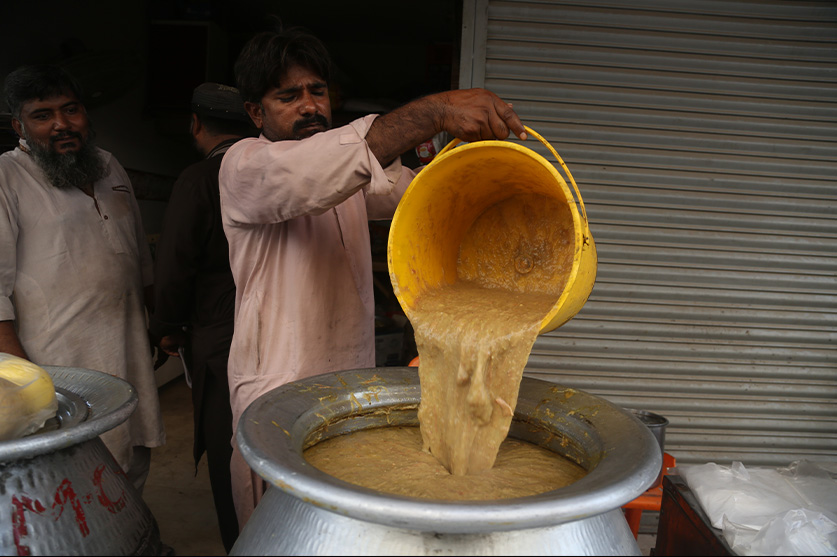KARACHI: During the Muslim month of fasting, one traditional Middle Eastern dish, harees, gains a special flavor in Karachi, where the original recipe is passed from generation to generation by descendants of Arabs who centuries ago migrated to the Indian Subcontinent.
Harees is one of the oldest Middle Eastern dishes. It was already featured in the earliest known Arabic cookbook, “Kitab Al-Tabih” (The Book of Dishes), compiled in the 10th century Baghdad.
The name harees comes from the Arabic word harasa, which means to mash, or to squash. Just as the name suggests, in the preparation of harees wheat is ground with goat meat or mutton, and then cooked over low heat until it gets creamy.
The dish was introduced to the Indian Subcontinent by immigrants from the Middle East who in the 17th century arrived in Hyderabad, a former princely state in the south-central Deccan region of present India. Their descendants moved to Pakistan after the partition of British India in 1947, and settled in the port of Karachi in an area now known as Hyderabad Colony.

Wheat cooked with different spices is ready to be blended with meat to prepare harees in Karachi, Pakistan, on April 12, 2022. (AN Photo)
Shaikh Saeed bin Mohsin Baqirf Alamudi, whose father was among those who migrated from Hyderabad to the Karachi neighborhood, traced his family’s origins to Yemen.
“When my father was alive, Yemeni culture remained part of our home,” he said.
Alamudi estimates there are now 500 families of similar ancestry in Karachi, but many of their members no longer even speak Arabic.
“We still follow a few things of our culture, like our dress and our food,” he added.

A customer waits to buy Haress at Mumtaz Caterers in Karachi’s Hyderabad Colony on April 12, 2022. (AN Photo)
Qahwah, the most popular kind of coffee brewed in the Middle East, regularly accompanies his daily meals, especially during the month of Ramadan.
And so does harees.
“Harees is liked by people,” he said. “In our home we eat harees fondly.”
Syed Mumtaz Ali, also a Hyderabad Colony resident, said it “is a dish of Arabs.”
His father opened a harees shop in the area over five decades ago. Now Ali himself runs his own restaurant, Munnu Bhai Food Corner, a continuation of his father’s business.
“The method is the same,” he said. “I have not changed it. It is the same mixture of wheat and meat, but we have added our own spices to it.”

Shaikh Saeed bin Mohsin Baqir Alamuni, a Pakistan with Arab ancestry, looks at his family tree at his residence in Karachi, Pakistan, on April 12, 2022. (AN Photo)
On usual days, most of the buyers are Arab descendants, but during Ramadan, members of every Pakistani community would arrive to Hyderabad Colony to break their fast with harees or take it home for iftar dinner.
“I sell 4-4.5 maunds (up to 180 kg) of harees daily,” Ali said.
Just next to Munnu Bhai Food Corner, there are two other joints serving the same wheaty, meaty dish, which shows how popular it is in the area.
For Saleh Abdullah Bawazir, also a Pakistani Arab, harees and his community are inseparable.
“It’s mandatory,” he said. “We cannot live without it.”












